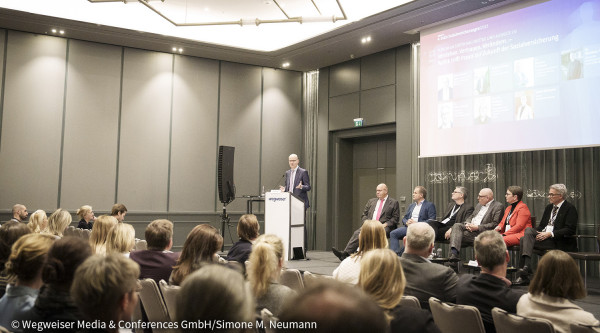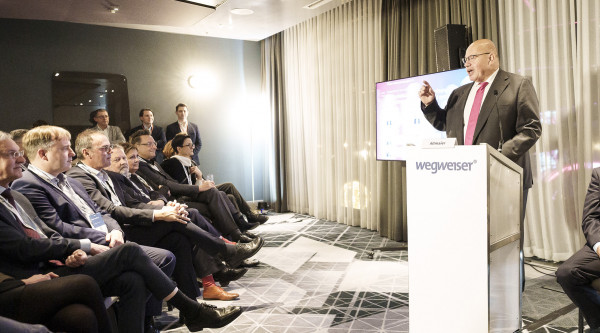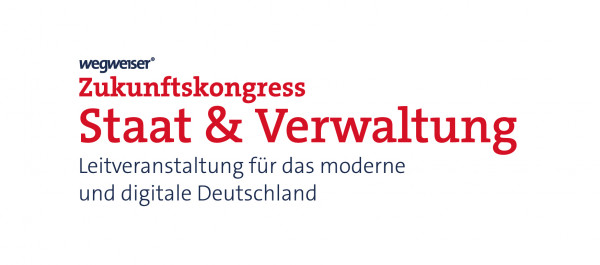Verwaltung der Zukunft: Estonia is often described as a global frontrunner in digital government. What comes next in the digital strategy when a country has already digitalised 100% of its public services?
Ranna Park: We've been asking ourselves the same question. Once we had digitalized nearly everything, the last piece was e-divorce, which often got a laugh, but actually highlights where we're heading next. Divorce was left for last because it’s not a service people use frequently; most hope never to use it at all. That led us to think about the future: creating a more personal, seamless state where services come to the citizen, not the other way around. This idea is central to Estonia’s 2030 digital agenda, and we’re already seeing early examples, especially in healthcare. For instance, by using biobank and genetic data from 20% of our population, we’re able to offer personalized healthcare. A concrete example is breast cancer screening: individuals with genetic risk factors can receive targeted reminders to attend check-ups once they reach their 50s, when breast cancer risk becomes more pronounced. It’s a powerful, very human example of how digitalization can serve people individually.
VdZ: How does this work in regards of data protection?
Park: Data privacy has always been a top concern for Estonia. With so much citizen data, the focus has consistently been on decentralization. Estonians are aware the government has access to their data, but what's crucial is that this data is stored separately and anonymized. For example, health data like genetic info isn’t tied to names or addresses.
At the same time, there are ongoing ethical questions: How do we ensure transparency about the services people receive? How do we tailor those services without compromising privacy?
Estonia uses an approach where benefits scale with the data you're willing to share, but no one is forced to go digital. Digital tools are seen as an additional layer, not a replacement for analog systems, especially crucial in rural areas where physical access to services is limited.
Estonians are also highly critical in the best sense. Even as one of the world’s most digital societies, people continually demand better services and stricter data privacy.
With the e-Residency program extending Estonia’s services to over 125,000 people in 185 countries, the responsibility has only grown. Any data privacy failure now impacts not just 1.3 million Estonians, but a global community. That’s a big responsibility for a small country.
VdZ: How did your background as an educator influence your approach to digital transformation?
Park: As a former educator, I can say the role of education in Estonia’s digital transformation has been absolutely crucial. Without a strong focus on educating our children, seniors, civil servants, and public and private sector employees, we wouldn’t be where we are today. The biggest barrier to adopting new technologies is fear, often rooted in not understanding. Education is the best way to overcome that.
Back in the late 1990s, we launched the Tiger Leap program to connect every school to the internet and train teachers—because giving people access without understanding wasn’t enough. Now in 2025, we’re launching the AI Leap program with a similar goal, but focused on artificial intelligence. We’re seeing that kids are already using AI; to do homework, write essays, or simply learn faster. So, instead of banning it, Estonia’s approach is to teach responsible and ethical use. Because unless the whole world agrees to stop using these tools, which is unlikely, we need to prepare the next generation.
Our Ministry of Education even projected that if we harness AI effectively, Estonia’s 600,000 working-age citizens could generate the value of six million—achieving a tenfold productivity boost. That’s the power of smart education. And today, in my role at the Briefing Centre, we continue this mission, educating global delegations not just about how Estonia went digital, but more importantly, why.
VdZ: What role does education play in enabling long-term success in digital governance?
Park: A quick bit of history: Estonia started digital education a little late. With the Tiger Leap program, we focused on schools but initially overlooked civil servants. Once we recognized that gap, we launched the Digital State Academy, which is still running today. It was designed for public sector employees but is open to anyone, and while not mandatory across the board, many courses are strongly recommended.
The goal isn’t to turn every civil servant into a coder. Not everyone studied computer science—some of us studied Shakespeare! What matters is that people understand the human, political, and practical dimensions of digitalization. That includes digital and cyber literacy; essential for surviving and thriving in a digital public sector.
Estonia’s drive to digitalize came from necessity. We’ve never had a surplus of time, people, or money, so we made shortage our advantage. Digital training saves massive resources. In fact, the Digital State Academy has cut training costs by about 60–70% compared to traditional, in-person training.
Today, 15 government institutions have some form of required training, ranging from short 90-minute sessions to full 10-hour courses. Ministries handling sensitive data—like Health, Social Affairs, and Defense—require more targeted, robust training. Others take a more flexible approach, trusting that civil servants will engage with the material as needed.
VdZ: What are the core leadership principles that have enabled Estonia’s digital transformation?
Park: Estonia’s digital journey has involved a fair share of luck. From the start, our approach hasn’t been about digitalizing for its own sake, but about asking citizens what they actually need.
This citizen-first mindset has shaped our entire digital development. One of the core principles of Estonian digital leadership is what we call brutal transparency. It stems from the major cyberattack in 2007, a defining moment when the government chose to be completely open: they explained exactly what happened, how bad it was, and what would come next.
That honesty set the tone for everything that followed. Since then, transparency and ongoing, honest dialogue with citizens have become non-negotiable standards. Because—like in Germany—if a government says “don’t worry,” people usually do the opposite. So ultimately, transparency and citizen-centricity have been key to building Estonia’s open digital society.
VdZ: What specific role do public-private partnerships play in the Estonian model of digital governance?
Park: From the start, Estonia’s digital state has been built through strong collaboration between the public and private sectors. While our government can act quickly, it's still a government, meaning things like procurement can take time. That’s where private sector partnerships have been essential. They help us deliver services faster, and in return, private companies gain access to high-level, complex projects. Many Estonian IT firms that started with domestic projects are now exporting similar solutions globally, from Southeast Asia to Latin America and beyond.
These public-private partnerships have been part of our digital journey from day one, and they’ll continue to play a key role in the future. From the outside, Estonia might look like a digital success story where everything works perfectly. But of course, that's not the full picture. We still have citizens who are skeptical or even resistant to digital services. And that’s okay. While we’d love 100% adoption, we take a more realistic—and perhaps more Scandinavian—approach: we offer digital tools, but we don't force anyone to use them.
The same applies to the private sector. We want our companies to succeed, and to think beyond Estonia. No startup here sees Estonia as their end market. It's a great place to test bold ideas, but we actively encourage companies to scale and go global.
VdZ: How has Estonia’s digital infrastructure helped the country respond to crises, such as the COVID-19 pandemic or cybersecurity threats? What makes your system more resilient?
Park: Looking back at the last five years Estonia's mindset has always been about readiness. We’ve built our systems to avoid being caught off guard. There's a deep cultural drive here to always ask for more, to be prepared. When the pandemic hit, our high level of digitalization made the transition to lockdown life much smoother than in many other countries. For Estonians, using digital tools daily is normal. There’s even a running joke that we digitalized everything just to avoid seeing each other during working hours—and there’s some truth to that!
What really sets Estonia apart, though, isn’t just that we’re digital, it’s that we’re good at adapting to change. Our small size helps, but it’s also a mindset: quick, responsive, and resilient. That extends to cybersecurity, too. We’ve always known that being 100% digital means being exposed. I like to use the analogy of a balloon: in the beginning, when you have few digital services, the surface area—or attack surface—is small. But as our digital balloon has expanded, we've had to be just as serious about security. Every piece of data in Estonia is decentralized and often anonymized. But most importantly, we focus on solutions that are simple and transparent for everyone. You don’t need a cybersecurity degree to understand how your data is protected.
And when crisis hits, like it did in March 2020, our government didn’t sugarcoat anything. The communication was direct, even harsh at times. But that honesty, along with our digital readiness, helped us manage the crisis well.
VdZ: Finally, what are you expecting from your visit at the 11. Zukunftskongress?
Park: What I’m really looking forward to is hearing how other countries are planning for the future. This congress is all about what’s next, and that’s also where I want to focus. We’re past the point of talking about Skype—yes, it was a big part of Estonia’s digital journey, but it was just shut down a couple of weeks ago. It’s time to look ahead and let that balloon grow. I’m especially curious about how different countries are enabling digitalization to thrive, because while Estonia started early, most countries now recognize that staying analog isn’t an option. I’m excited for the discussions, especially given Estonia’s role as an educator in this space. We love sharing our experience, including our failures. Success stories are great, but it’s the failures that really resonate, both on a human level and a national one. They’re what build character.

Rannar Park auf dem 11. Zukunftskongress Staat & Verwaltung
🗓️ 24. Juni, 17:15 - 18:15 Uhr
➡️ Hier geht's zur Session
Deutschland in Europa und der Welt: Von globalen Best Practices zur Steigerung von Regierungs- und Verwaltungseffizienz lernen








